The sky's been bursting with exploding stars this season. Plus there's a new storm on Saturn. What's a skywatcher to do? Haul out the scope!
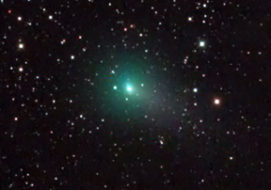
Damian Peach
Welcome to a new and occasional blog about the transient universe. We're calling it "Big Scope Breakout." Every Wednesday, I post the "Explore the Night" blog here at Sky & Telescope, where we explore brighter comets, exploding stars, and fascinating deep sky objects. But a lot of unanticipated sky events can happen in a week — supernovae, Earth-approaching asteroids, and comet discoveries, to name just a few.
To better serve observers with larger instruments in a timely manner, we're going to get that news to you ASAP, so you can spot these transient events before the clouds close in, the Moon returns, or the target fades from view. Some of the most exciting sights can be rather dim, so expect to see more reports of fainter objects than brighter. Of course, that won't always be true. It all depends on what the cosmos has on the menu.
This week we're bananas with supernovae and novae, plus there's a new storm on Saturn.
Supernovae Cornucopia
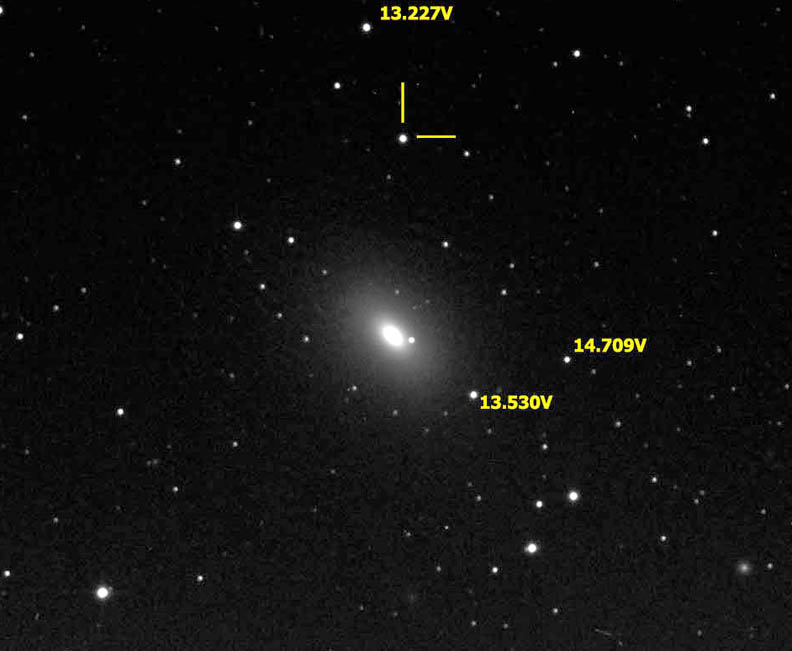
Stan Howerton
SN 2018aoz was discovered on April 2nd by the DLT40 Survey in the elliptical galaxy NGC 3923 in Hydra. A Type Ia supernova, it involved the explosive burning of a white dwarf in close orbit around a companion star. SN 2018aoz lies 1.5″ east and 224″ north of the galaxy's bright nucleus, far enough from the dense central regions to easily pick out. The object is currently magnitude 13.4. I recommend an 8-inch or larger telescopes from a dark sky.
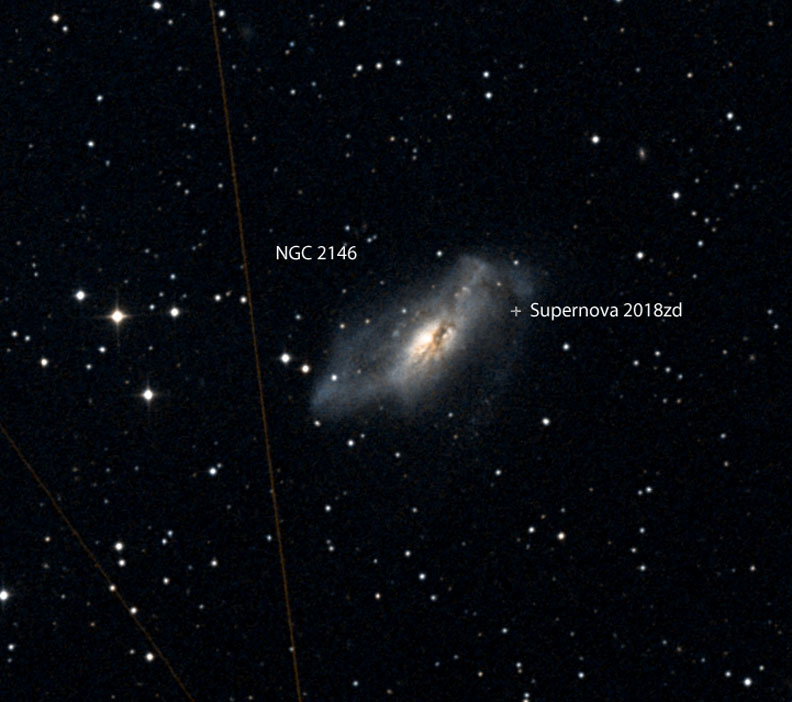
DSS2
SN 2018zd was discovered on March 2 by Japanese amateur Koichi Itagaki in the barred spiral NGC 2146 in Camelopardalis. From its spectrum we know it's a Type IIn explosion caused by the rapid collapse of a supergiant and subsequent shock wave that tore the star apart. SN 2018zd peaked at around magnitude 13.3 in March; it's now magnitude 14.1 and slowly fading.
For more information on these and other supernovae, please visit David Bishop's Latest Supernovae page.
Novae
Nova CMa 2018 was discovered on March 24th by Yuji Nakamura at magnitude 12 and rose to about magnitude 10 a few days later. It now shines around magnitude 11.5 and is visible in the southwestern sky about 8° southeast of Sirius at dusk. AAVSO finder chart here.
Nova Car 2018 was discovered on March 20th by the All-Sky Automated Survey for Supernovae (ASAS-SN) and still shines binocular-bright at magnitude 6.5 in the constellation Carina. AAVSO finder chart here.
Nova Oph 2018 No. 2 was discovered on by three Japanese observers when it was around magnitude 12 on March 10th. The nova peaked around 9.5 two days later and remains bright at magnitude 10.5 in early April. AAVSO finder chart is here.
Painted Black
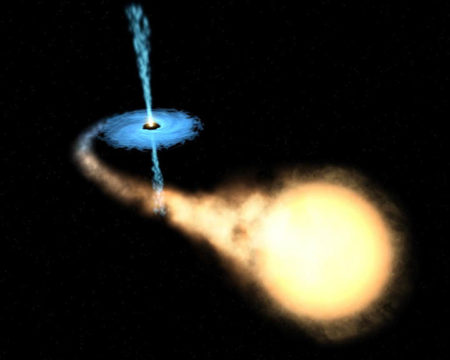
ESA / NASA / Felix Mirabel
It's uncommon to witness the voracious appetite of a black hole, but the black hole X-ray binary MAXI J1820+070 (ASASSN-18ey) makes it easy. Located in eastern Ophiuchus and best observed in the wee hours before dawn, it's currently undergoing a bright outburst. I first observed it 2 weeks ago at magnitude 12.3, and it's still holding steady right now between magnitude 11.9–12.1, bright enough to pick up in the 4-inch telescope. AAVSO chart is here.
Saturnian Storm
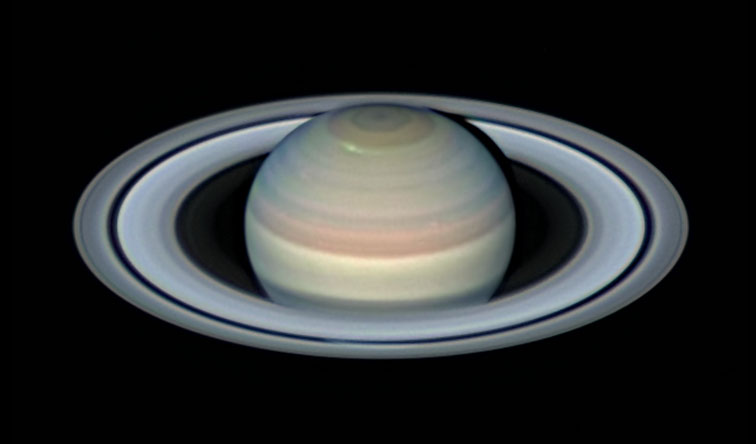
Damian Peach
Maciel Bassani Sparrenberger of Brazil observed a unusual bright spot in Saturn's north polar region on March 29th at longitude 320°(CM III). At the time it measured about 3,700 km across. Small and distinct at first, a week later the storm is still present but less obvious. Marc Delcroix prepared a list of approximate transit times and longitudes (CM III) based on the wind speed at the spot's latitude for observers who'd like to attempt a photo or visual observation. All times are UT.
2018 Apr 10 03:10 (162°) 13:39 ( 156°)
2018 Apr 11 00:08 (151°) 10:37 ( 145°) 21:06 ( 139°)
2018 Apr 12 07:35 (133°) 18:04 ( 127°)
2018 Apr 13 15:01 (115°)
2018 Apr 14 01:30 (109°) 11:59 ( 103°) 22:28 ( 98°)
2018 Apr 15 08:57 (92°) 19:26 ( 86°)
2018 Apr 16 05:55 (80°) 16:24 ( 74°)
2018 Apr 17 02:53 (69°) 13:22 ( 63°) 23:51 ( 57°)
2018 Apr 18 10:20 (51°) 20:49 ( 45°)
2018 Apr 19 07:17 (39°) 17:46 ( 33°)
2018 Apr 20 04:15 (27°) 14:44 ( 22°)
2018 Apr 21 01:13 (16°) 11:42 ( 10°) 22:11 ( 4°)
2018 Apr 22 08:40 (358°) 19:09 ( 353°)
2018 Apr 23 05:38 (347°) 16:07 ( 341°)
2018 Apr 24 02:36 (335°) 13:04 ( 329°) 23:33 ( 323°)
2018 Apr 25 10:02 (317°) 20:31 ( 311°)
2018 Apr 26 07:00 (306°) 17:29 ( 300°)
2018 Apr 27 03:58 (294°) 14:27 ( 288°)
2018 Apr 28 00:56 (282°) 11:25 ( 277°) 21:54 ( 271°)
2018 Apr 29 18:51 (259°)
2018 Apr 30 05:20 (253°) 15:49 ( 247°)
Happy hunting! Until next time . . .
 0
0









Comments
You must be logged in to post a comment.